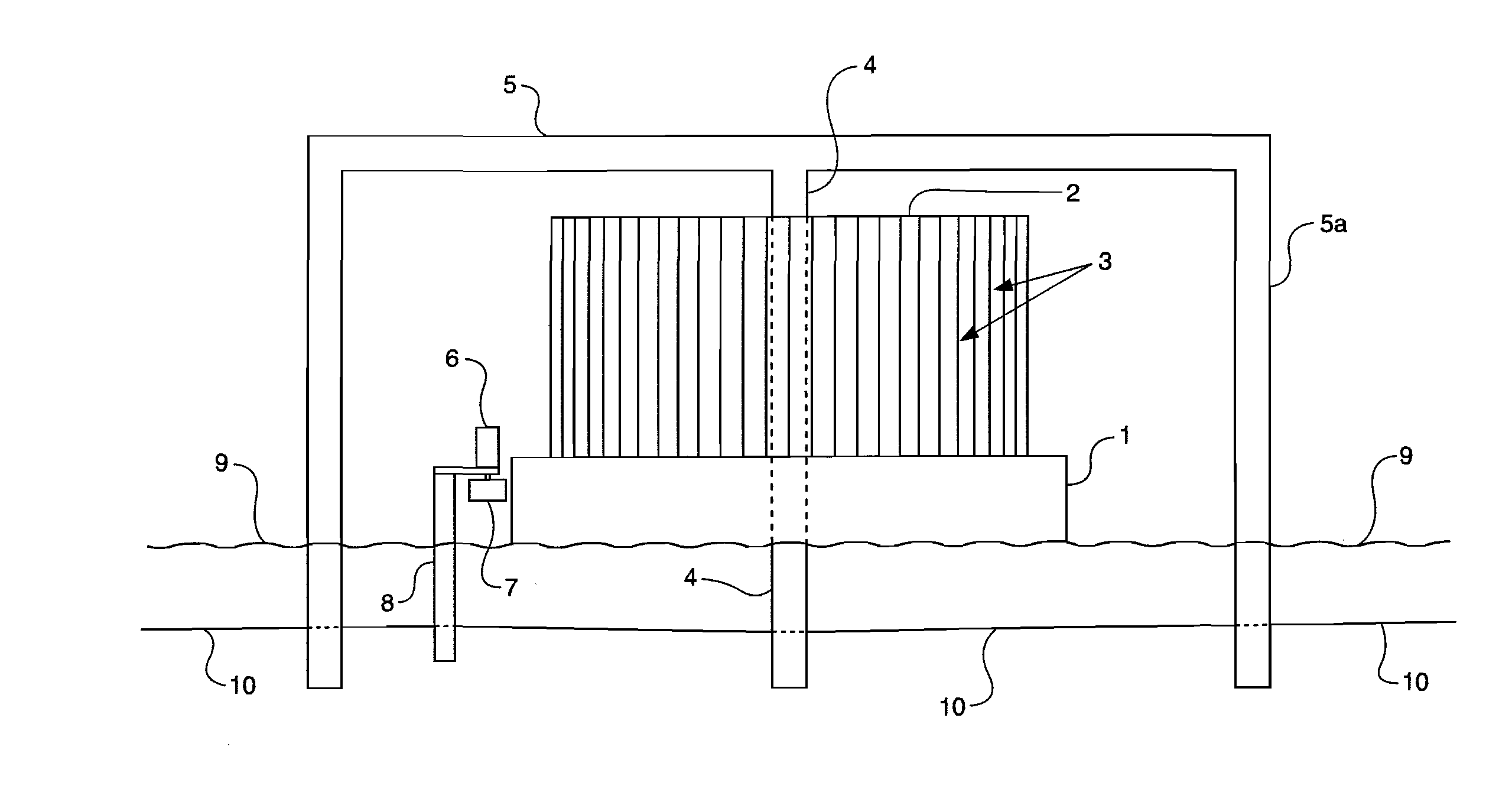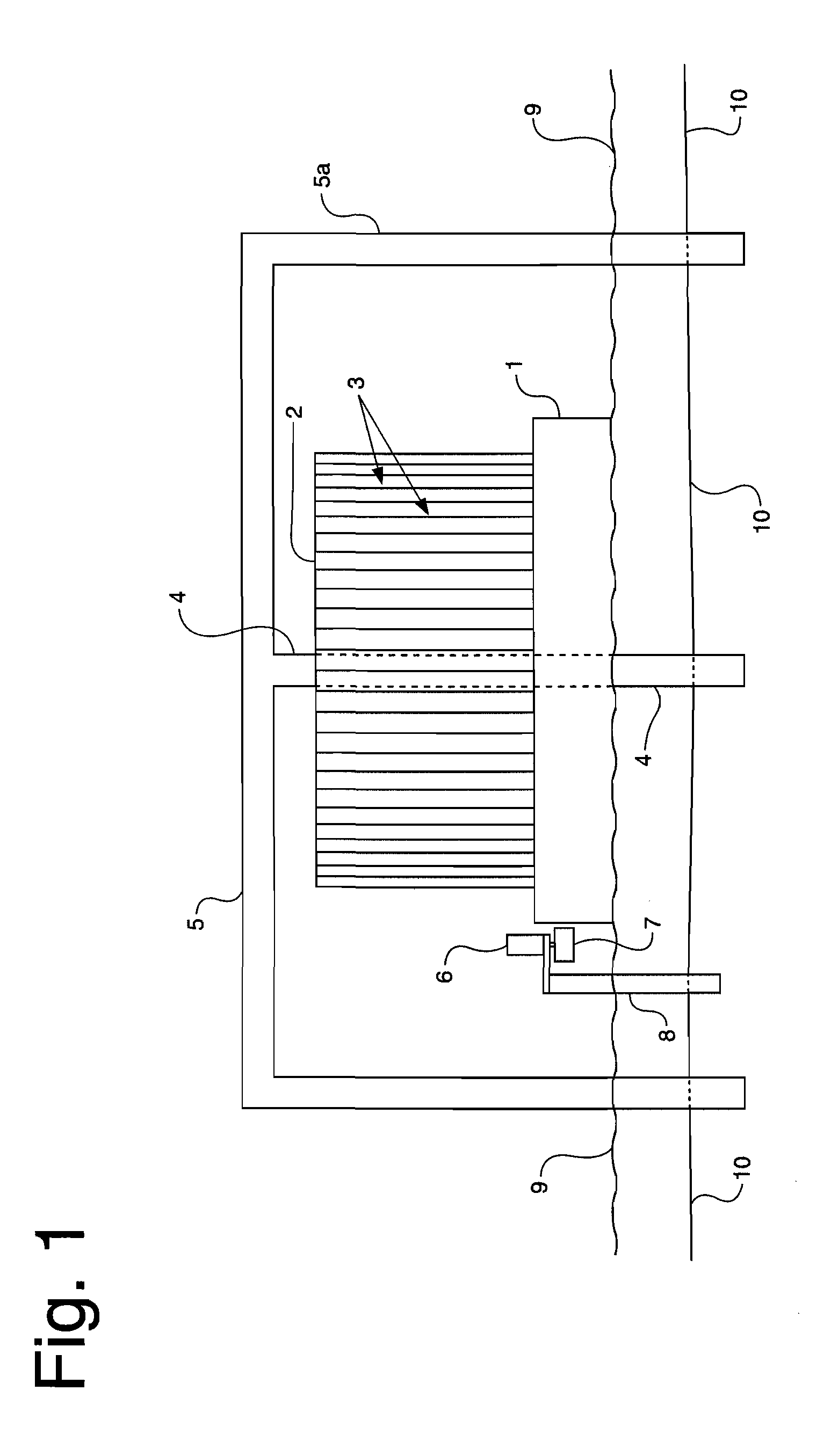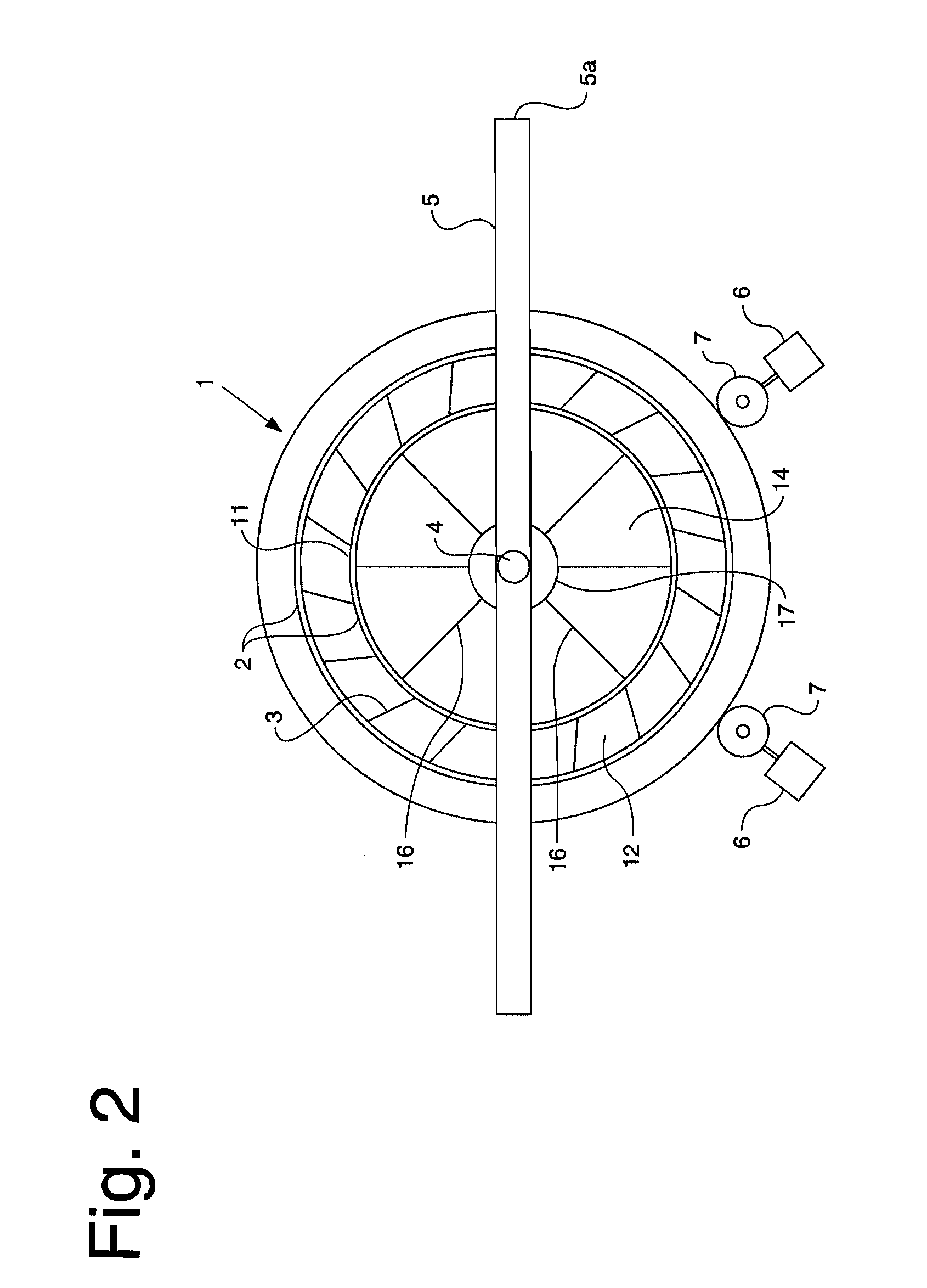Reduced Friction Wind Turbine Apparatus and Method
a wind turbine and friction reduction technology, applied in the direction of renewable energy generation, electric generator control, greenhouse gas reduction, etc., can solve the problems of inconvenient operation, inconvenient maintenance, and inability to meet the needs of the customer, so as to reduce the drag force, increase the mass carried by the wind, and reduce the effect of drag
- Summary
- Abstract
- Description
- Claims
- Application Information
AI Technical Summary
Benefits of technology
Problems solved by technology
Method used
Image
Examples
Embodiment Construction
[0053] The following description of the preferred embodiment(s) is merely exemplary in nature and is in no way intended to limit the invention, its application, or uses.
[0054] As illustrated in the drawings where like numerals represent like elements, FIGS. 1 and 2 depict the first embodiment of the present invention. A floating hull 1 is disposed to rest on a body of water 9. The body of water may be a preexisting naturally formed body water. Alternatively, the body of water 9 may be an artificially created pond, lagoon or the like disposed for support of the wind driven electricity generator.
[0055] Hull 1 has a positive displacement so that it floats on water. Hull 1 may be any size and weight, subject only to the limitation that it floats. Accordingly, hull 1 may be heavy and massive enough to serve as a flywheel. In the depicted embodiment, hull 1 is circular.
[0056] Hull 1 serves as a bottom mount for a plurality of vanes 3. The vanes are circularly arranged to form a fan. Th...
PUM
 Login to View More
Login to View More Abstract
Description
Claims
Application Information
 Login to View More
Login to View More - R&D
- Intellectual Property
- Life Sciences
- Materials
- Tech Scout
- Unparalleled Data Quality
- Higher Quality Content
- 60% Fewer Hallucinations
Browse by: Latest US Patents, China's latest patents, Technical Efficacy Thesaurus, Application Domain, Technology Topic, Popular Technical Reports.
© 2025 PatSnap. All rights reserved.Legal|Privacy policy|Modern Slavery Act Transparency Statement|Sitemap|About US| Contact US: help@patsnap.com



